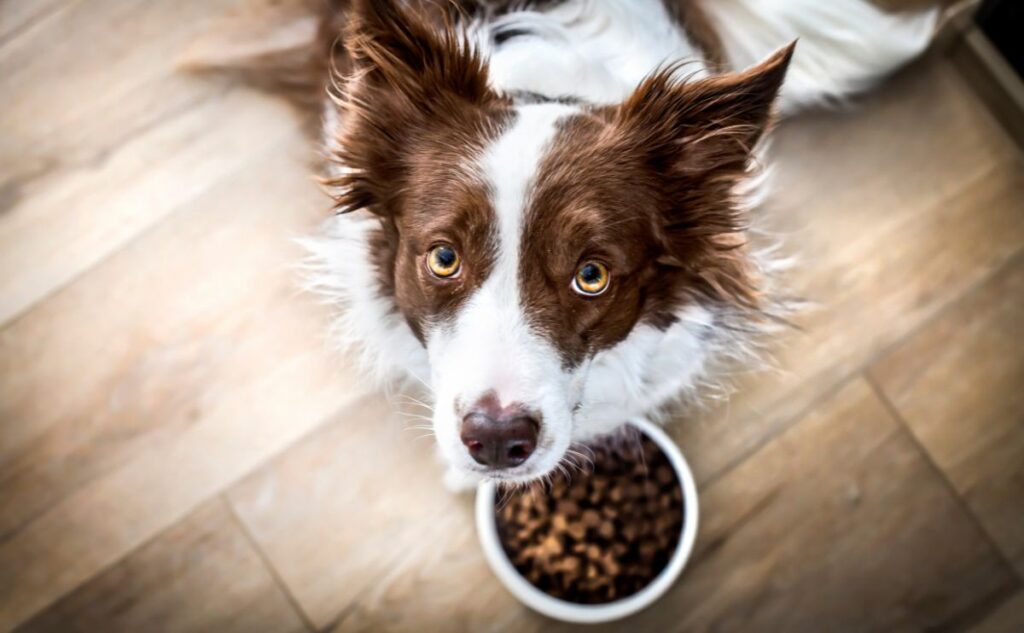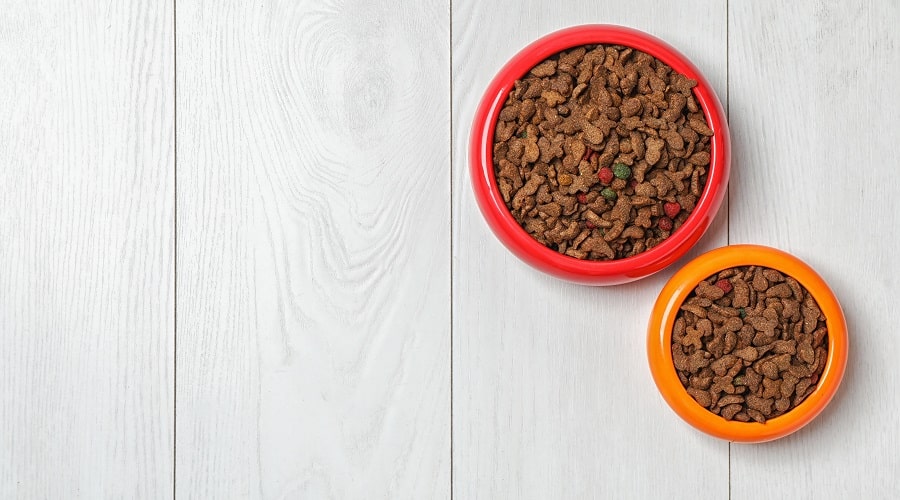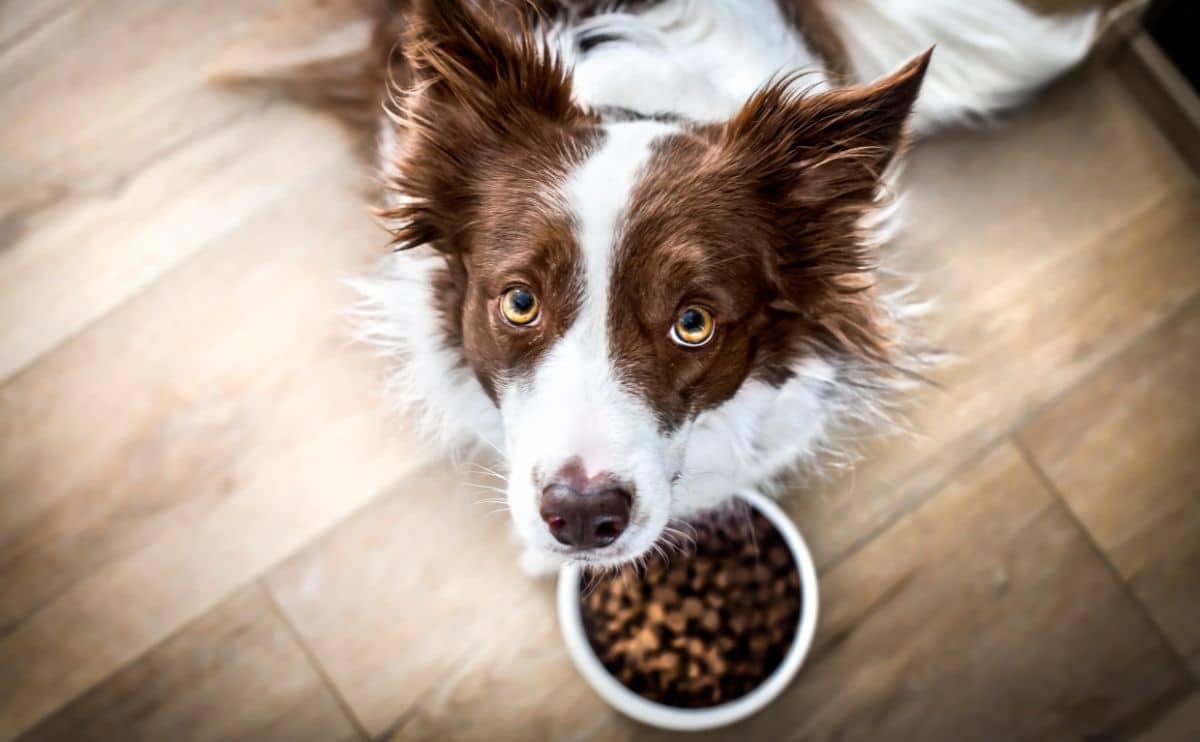Border Collies are energetic, intelligent dogs that rely on balanced nutrition. Determining the right amount to feed them is key—too little may lead to low energy, while overfeeding can cause obesity and health issues. Factors like age, weight, and activity level make portion control a challenge, but a feeding chart can simplify this process for puppy owners.

Puppies grow rapidly and need frequent, nutrient-rich meals. Without proper nutrition, they may lack energy for development. Even adult and senior Border Collies require tailored diets based on their activity levels. This guide covers feeding amounts, schedules, and expert tips to keep your dog healthy.
Border Collie Feeding Chart By Age & Weight
| Age | Weight (lbs) | Type Of Food | Calories | Meals Per Day |
|---|---|---|---|---|
| 0-3 weeks | 0.5-3 | Mother’s milk | 100-300 | Unlimited |
| 3-4 weeks | 2-5 | Mother’s milk and mush | 250-450 | Unlimited |
| 4-6 weeks | 3-8 | Mother’s milk and mush | 350-600 | 4-6 |
| 6-8 weeks | 5-10 | Mother’s milk and puppy diet | 500-700 | 4-6 |
| 8 weeks to 6 months | 10-25 | Puppy diet | 600-1,500 | 3-4 |
| 6-9 months | 20-35 | Puppy diet | 1,200-1,800 | 2-3 |
| 9-12 months | 25-45 | Puppy diet | 1,400-2,000 | 2 |
| 12-18 months | 30-55 | Puppy or adult diet | 1,500-2,400 | 1-2 |
How Much To Feed A Border Collie Puppy

Raising a Border Collie puppy requires careful nutrition for growth and energy. Their needs change with age, so understanding key growth phases is essential. From milk to solid food, proper feeding supports their development.
Weeks 0 – 3
Newborn puppies depend on mother’s milk for nutrients and antibodies. If the mother is unavailable, a puppy milk replacer fed every 2-3 hours is necessary for growth.
Weeks 3 – 4
At 3 weeks, puppies start transitioning to soft food. Mix high-quality puppy food with water or milk replacer, offering small portions 3-4 times daily while continuing to nurse.
Weeks 4 – 6
By 4 weeks, puppies are more active. Wean them gradually with 4-6 meals of thickened mush, ensuring high-protein food supports bone and muscle growth.
Weeks 6 – 8
Most puppies switch to solid food by 7-10 weeks. Feed 4-6 meals of breed-specific puppy food to sustain energy and brain development.
8 Weeks – 12 Months
At 8 weeks, puppies (10-25 lbs) need 3-4 meals daily of protein-rich food. Adjust portions for activity levels, avoiding overfeeding to protect joints.
12 – 18 Months
By 12 months, puppies (30-55 lbs) transition to 1-2 meals of adult food. Monitor portions to maintain a lean build, adjusting for activity.
Feeding Schedule For Border Collies

Consistent feeding helps regulate digestion and energy. Puppies need 3-4 meals daily (e.g., 7 am, noon, 5 pm). Adults thrive on 2 meals: morning and evening, with the last meal by 6 pm for digestion.
Puppy Food vs Adult Food

Puppy food has more calories, protein, and DHA for growth. Adult food balances energy without excess, preventing obesity. Transition to adult food around 12-14 months with a high-quality, active breed formula.
Different Types Of Dog Food
Dry Food (Kibble)

Kibble is convenient, affordable, and regulated. Choose high-quality options with clear ingredients to avoid fillers or low-quality proteins.
Wet Food (Canned)

Wet food is palatable and hydrating but may require larger portions. Check for BPA-free packaging to avoid health risks.
Fresh (Human-Grade)

Human-grade food uses quality ingredients but is costly and perishable. Verify sourcing and production standards since "human-grade" isn’t regulated.
Home Cooked

Home-cooked meals offer control but require balanced nutrition. Examples like Bramble (25 years) show fresh food benefits, but planning is key.
Raw, Prey Model, Or BARF

Raw diets mimic wild canines but may be expensive and risky. Commercially prepared options reduce contamination and balance nutrients.
Vegan Diet

Vegan diets need plant-based proteins and supplements. Benefits include ethics and allergy support, but ensuring all nutrients is critical for active breeds.
Importance Of High-Quality Dog Food
Quality food supports immunity, energy, and gene regulation, reducing disease risks. It balances nutrients for weight management and vitality.
Ingredients To Avoid In Dog Food
Avoid synthetic preservatives (BHA, BHT), artificial dyes, unnamed meat meals, propylene glycol, and rendered fats, which may pose health risks.
What Nutrients Do Border Collie Puppies Need?
Puppies require protein (growth), fats (energy), carbs (fiber), vitamins, minerals, and water. Protein sources include animal and plant; fats aid vitamin absorption; carbs support digestion.
Keeping Your Border Collie At The Right Weight

Maintain weight with portion control, quality food, exercise, treat monitoring, regular weighing, scheduled feeding, life-stage adjustments, and vet consultation.
Frequently Asked Questions
Is It Safe To Feed My Border Collie Human Food?
Some human foods are safe, but many are toxic. Consult a guide on dangerous foods for details.
How Do I Transition My Border Collie To A New Food?
Gradually mix new food over 7-10 days, increasing the new portion daily to avoid digestive issues.
How Can I Tell If My Border Collie Is Overweight Or Underweight?
Check for a visible waist, easy-to-feel ribs, and a slight abdominal tuck. Consult a vet if unsure.
Best Dog Food For Border Collies
For top picks tailored to life stages, refer to our guide on the best dog food for Border Collies.

